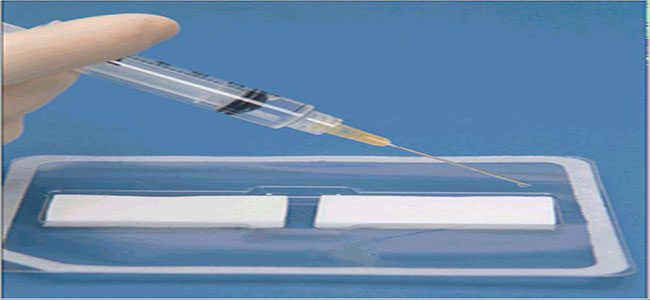
Bone Proteins in the Lower Back
Introduction
Proteins called bone morphogenetic proteins (BMP) are used to promote fusion of the bones (vertebrae) in the lower back after fusion surgeries. In the clinical trial SRF participated in, patients who received BMP had a higher rate of successful fusion and a significant reduction of pain after surgery in comparison to patients who received autologous bone grafts. Additionally, patients treated with BMP were less likely to require another costly and lengthy surgery in the future to treat the same condition.
Research Summary
Natural and biological stress on intervertebral discs, which form the joint between adjacent vertebrae in the spine, can be a source of severe back pain. The stress can cause damage to the discs. In some cases, spinal specialists treat this by performing an interbody fusion surgery by removing the damaged disc and fusing the vertebrae above and below the disc. For this operation, many surgeons take bone graft from the patient’s own hip and transplant those fragments into the space between the vertebrae to promote fusion of the bones. This method of using the patient’s own bone requires an additional incision and can cause chronic pain and discomfort at the graft site at the hip.
More recently, the use of particular proteins called bone morphogenetic proteins (BMP) have been studied as an alternative to using the patient’s own bone as a graft. These proteins are growth factors that specifically promotes bone formation and growth. BMP is present in a small quantity within bones, however, it would require hundreds of kilograms of bone to extract minute quantities of BMP. Fortunately, scientists were able to synthesize BMP in labs so we now have access to large quantities to use in spine surgery to promote bone growth and fusion of the vertebrae.
The Spinal Research Foundation was part of the original U.S. Food and Drug Administration (FDA) investigation of the use of BMP in the lumbar spine (lower back). It is the “longest follow-up to date of patients undergoing spinal fusion using the INFUSE Bone Graft”. (INFUSE in the commercial name for the BMP bone graft.) Patients were followed for six years to see the effects of the use of BMP in spinal fusion. The patients that received BMP had a 98% successful fusion rate. Only 10.4% of the patients needed a secondary surgery for a variety of reasons.
Other exciting results from the BMP study are as follows:
- The use of BMP as a graft in fusion surgery led to a higher rate of successful bone fusion and a significant reduction of pain after surgery in comparison to other bone grafts
- Patients treated with BMP were less likely to require another costly and lengthy surgery
- Ability to work: patient’s able to work increased from 52% before surgery to 63% working after surgery by the 6-month check-up and was maintained through the 6-year point.
- Back pain and leg pain: Both back and leg pain were significantly decreased from preoperative assessment and maintained through the 6-year point.
In a previous study of BMP, there were several good results associated with the use of BMP in spinal fusion. At a two-year check-up, the group of patients with BMP had a 6% higher fusion rate. On average, patients with BMP spent less time in surgery and have less estimated blood loss. Less time in surgery could limit blood loss and lower chances of doctor fatigue. Greater blood loss is associated with more blood transfusions, increasing the risks of disease transmission, adverse reactions, and prolonged stays in the hospital.


